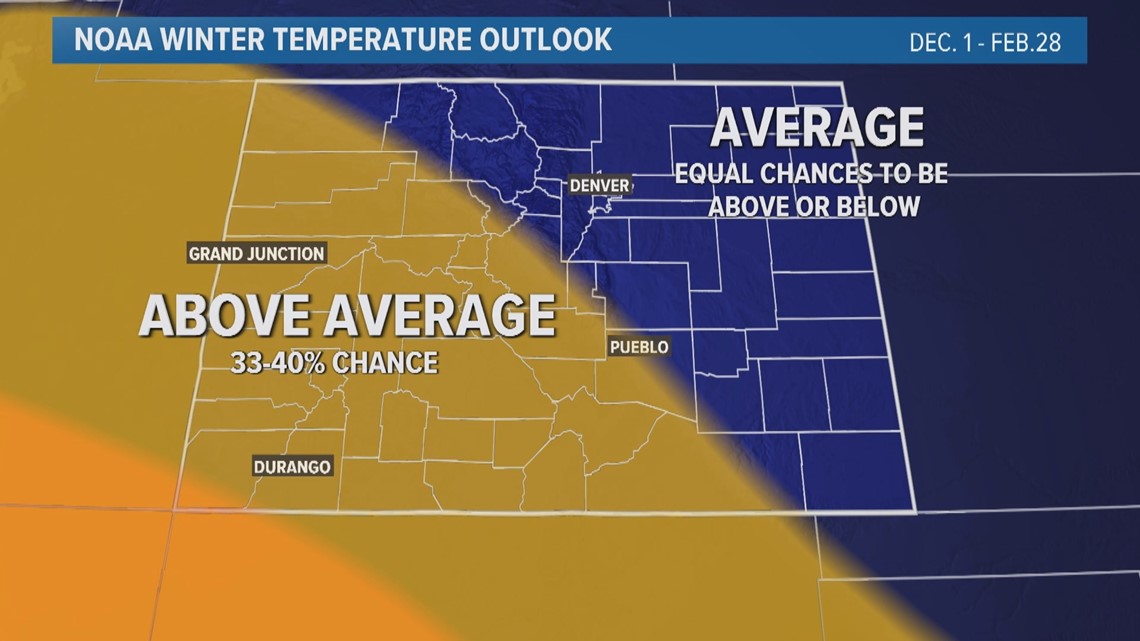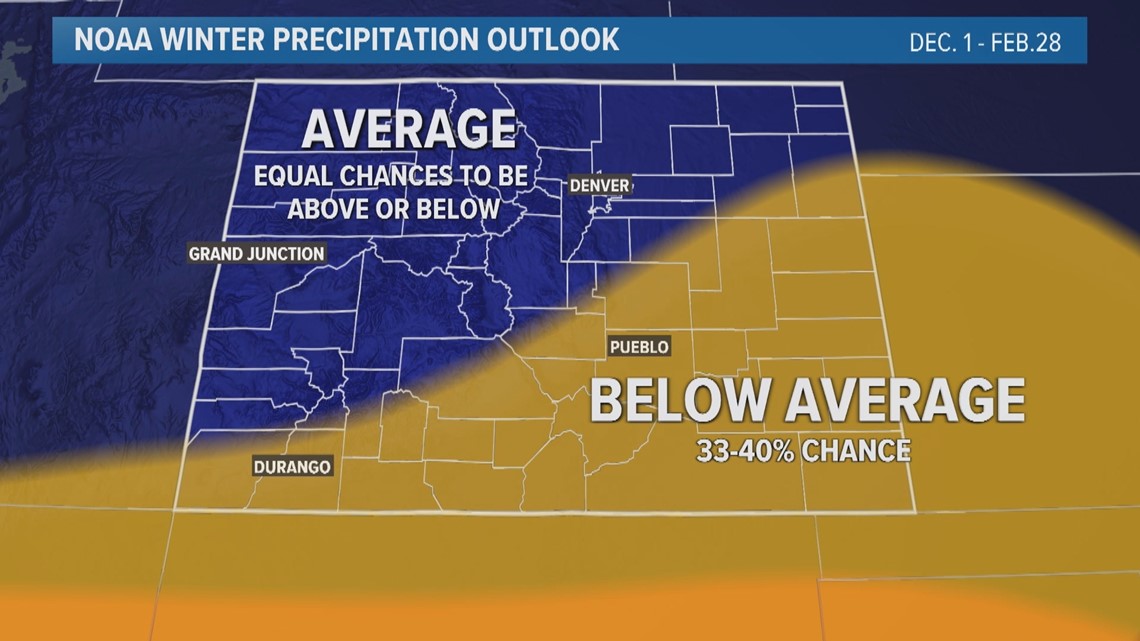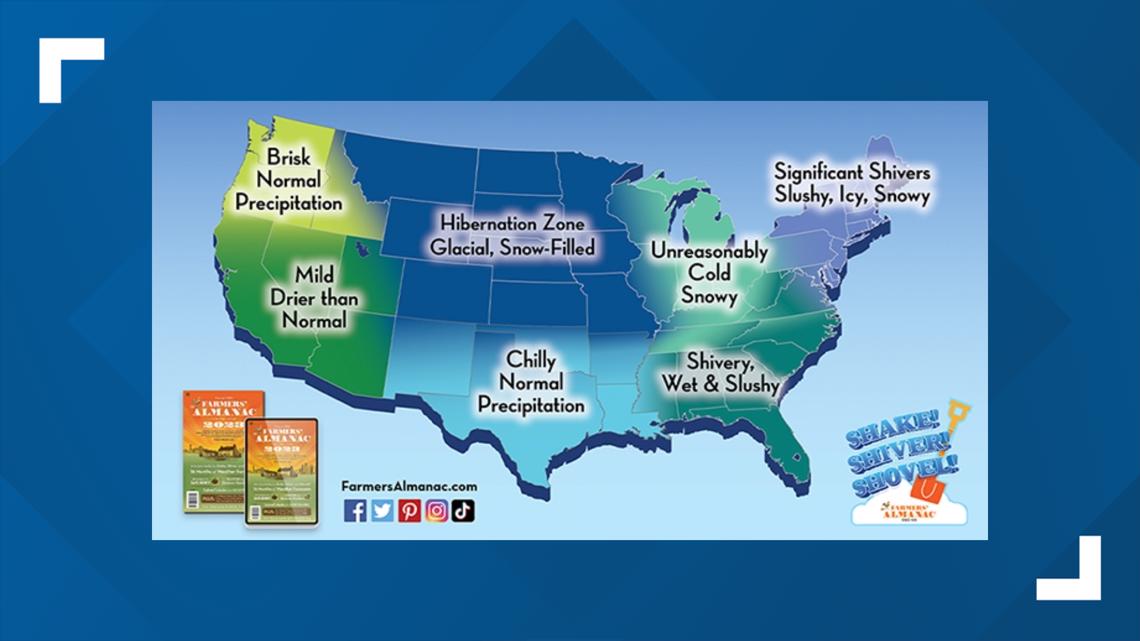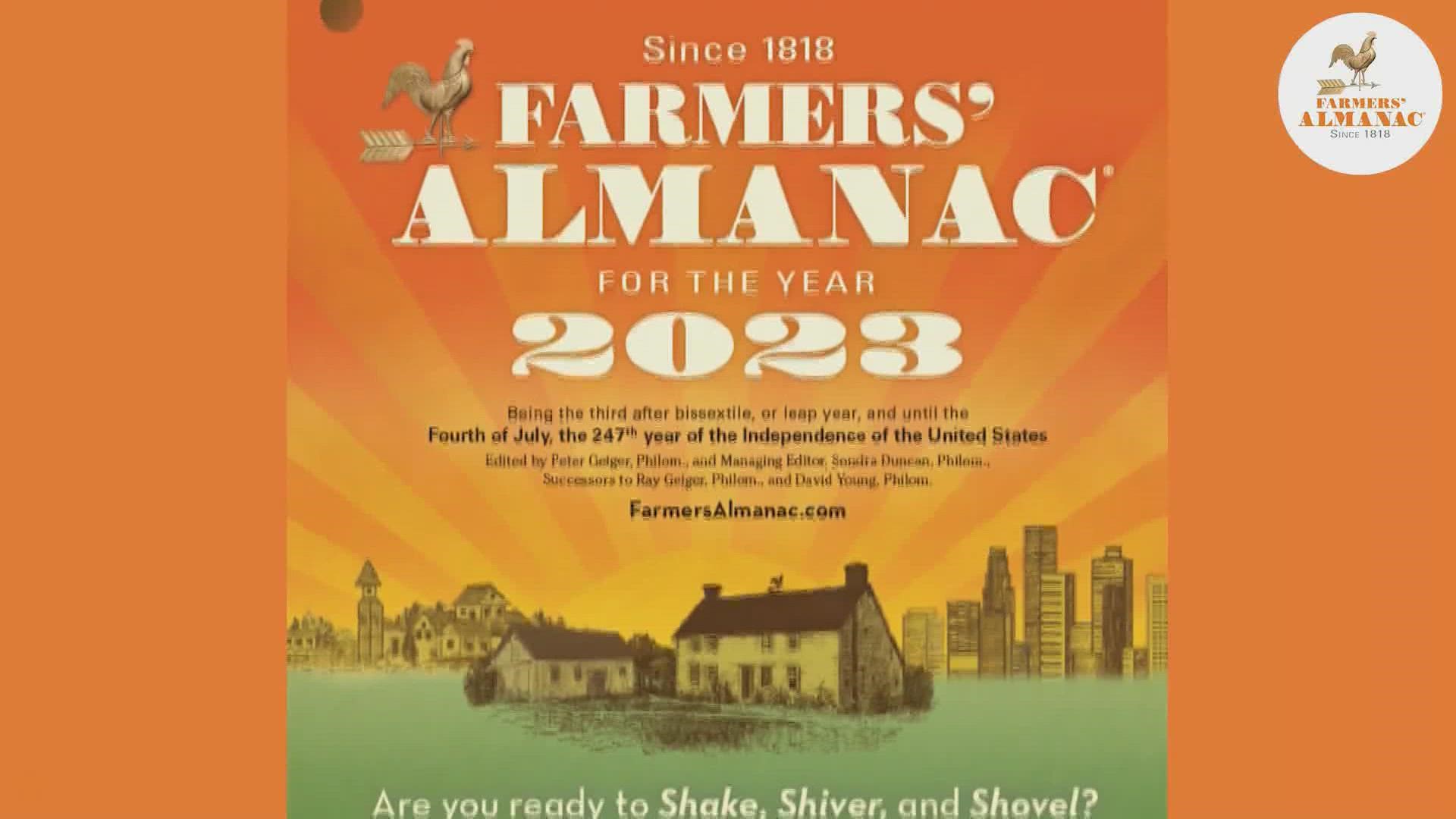LEWISTON, Maine — Winter is coming to Colorado soon. There have already been several winter storms across the state, but technically those came in the fall.
You probably don't need an expert to tell you there are more cold snaps and snowstorms on the way, but there are a couple of outlets that offer up some more specific predictions about the weather that lies ahead over the next three months.
The definition of winter does vary, however. For the National Oceanic and Atmospheric Administration (NOAA), winter starts on Dec. 1 and runs through the last day of February. And the Farmers' Almanac says winter starts on the solstice (Dec. 21) and goes to the spring equinox (March 20).
And this season, the two winter forecasts are very much at odds.
NOAA WINTER FORECAST
NOAA’s official weather outlook is calling for average temperatures in northeast Colorado, and warmer than average temperatures in the southwest.
For example, Denver's average winter temperature is 31.8 degrees. It's calculated by averaging the daily high and low temperature for every day and then averaging all 89 days of winter.
So, NOAA is saying there is a 33 to 40% chance that the average temperature will be warmer than that average.
And in Durango, the average winter temperature is 26.5 degrees.


The snow outlook is also split – average to the north and below average to the south.
The 30-year average winter snowfall in Denver is 21.5 inches. More than half of Denver's snow falls outside of the winter months.
The average winter snowfall at the National Weather Service's COOP weather station 8 miles south of Durango is 24.6 inches.


FARMERS' ALMANAC WINTER FORECAST
Another famous winter forecast is calling for something quite different. The Farmers’ Almanac says prepare to shake, shiver, and shovel.
“What we’re saying is hibernation zone, glacial and snow filled " said Peter Geiger, Editor of Farmers' Almanac. "So, that tells me a lot of snow, very cold, and it will last.”
Geiger said that means their forecast is showing colder than average temperatures in Colorado with above average snow over the winter months.


Two different forecasts, with two very different methodologies. NOAA uses oceanic and atmospheric science to make their predictions, while the Farmers’ Almanac uses mostly astronomy.
“We are what we are. We’ve always been there for farmers and for people,' said Geiger. "And we just happen to do weather. It’s very important and I think we do a good job.”
He said their prognostications come from a mathematical formula based on solar activity and sunspots, along with the position of the planets and the moon. He wouldn't say how they use that information to make weather predictions, but that correlation with astronomy and the weather on Earth has been unchanged for more than 200 years.
Geiger said while the Farmers' Almanac doesn't use atmospheric science, they do recognize the success that NOAA has had recently in finding a connection between ocean temperatures along the equator and winter weather.
NOAA cites the La Niña pattern, the cold phase of the El Niño Southern Oscillation (ENSO), as the main driver behind this winter's forecast.
"But all La Niñas are not created equal," he said. "It's just not consistent enough. There have been La Niñas where the opposite weather has occurred."
He said even if they wanted to add some oceanic oscillations to the Farmers' Almanac's winter forecast formula, they couldn't because of how far in advance they make their predictions.
Their winter forecasts are put together two years in advance, according to Geiger, and published a year in advance. Most oceanic oscillations that climatologists use to predict seasonal weather develop just months in advance of winter weather.
That also means that they use current astronomical alignments and solar activity to predict weather that will happen in two years.
CLIMATE CHANGE
Climatologists are also trying to figure out how climate change may impact seasonal forecasting, and how it may impact the oceanic oscillations they use to predict seasonal weather.
But Geiger said the Farmers' Almanac is essentially immune to those impacts for now because the sun, the moon and the other planets are no affected by climate change.
"The jury is still out on how climate change will impact day-to-day weather events and even seasonal predictions," he said. "We look at factors outside of planet earth, so our method will continue to work for some time."
He said if the warming of the climate continues to increase at the rate that scientists are predicting, eventually the human impact on the climate might start offsetting the publication's astronomical formula.
And while they don't use atmospheric science in their weather forecasts, he said the publication is becoming keener to climate change.
For the first time, the Almanac even has articles about climate change in the 2023 issue.


“But we don’t talk about it in terms of political, we talk about it in terms of what you can do be more resourceful and to not waste,” said Geiger. "We're very intentional about not making political statements in our book. Our readers grab the Farmers' Almanac to get a break from politics."
He said we shouldn’t have to blame bad weather on human behavior to be more climate-friendly. He said weather prediction is only 8% of the Farmers’ Almanac -- the rest is just a guide to being a better human.
The publication is full of what Geiger calls life hacks. Ways to do everyday tasks more efficiently and environmentally friendly, while saving money at the same time.
“The climate is always changing, but right now there are things that we can do that are helpful to ourselves, helpful to the planet, helpful to our neighbors,” he said.
SUGGESTED VIDEOS: Colorado Climate

